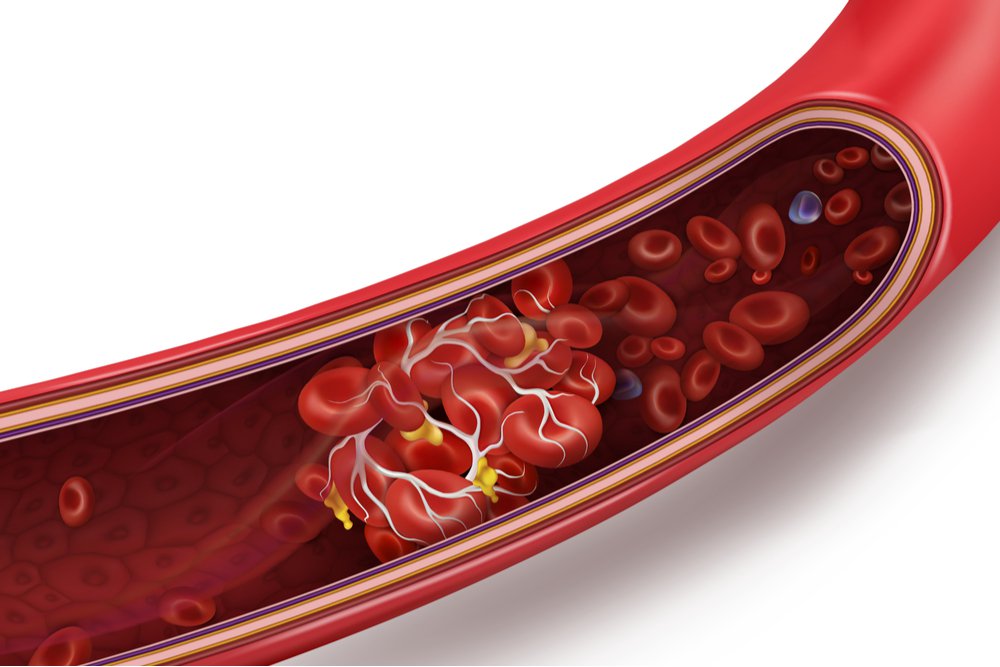 “Vascular disease” is a broad term that refers to a number of conditions that can affect the veins. Blood clots are one of the most common problems that may arise with your veins, and you’ve likely heard of them – but do you know what exactly they are, how they happen, and how your vascular specialist might treat them?
“Vascular disease” is a broad term that refers to a number of conditions that can affect the veins. Blood clots are one of the most common problems that may arise with your veins, and you’ve likely heard of them – but do you know what exactly they are, how they happen, and how your vascular specialist might treat them?
At Sinai Laser Vein Center, we want our patients to have a full understanding of the conditions that may affect their vascular health, as well as the risk factors they may face and the treatment options that are available. Here are three things to know about venous blood clots:
1. Slowed Blood Flow Causes Venous Clots
In most (if not all) cases, blood clots in the veins happen when the blood flow to your lower extremities – that is, legs and feet – has slowed and accumulated, potentially blocking more blood from passing through the vein. This slowing of blood flow can occur for a number of reasons, and when diagnosing and treating the clot, it’s important for your vascular specialist to identify the root cause. Common causes of reduced blood flow to the legs and feet include limited physical activity and reduced movement of the lower extremities, which can be a result of a sedentary lifestyle or limitations to your mobility due to other conditions. In other cases, blood clots can be the result of injury or infection to the affected vein.
2. Certain Factors Can Increase Your Risk for Clots
While the causes of venous blood clots may be numerous, it’s also important to remember that there are a range of factors that can contribute to your risk of clots. Some of these risk factors are related to underlying conditions that can cause clots, while others can be identified as direct causes themselves. These factors include:
- Heart disease
- Hypertension (high blood pressure)
- Diabetes
- Smoking or using tobacco
- Certain genetic disorders
- Pregnancy
- Use of estrogen for hormone therapy
While some of these factors are within your control, others are not, and it’s vital to share your medical history with your vascular specialist and your primary care physicians so that all risks can be identified and monitored.
3. A Vascular Specialist Can Help Treat Clots
Vascular specialists refer to certain cases of venous blood clots as Deep Vein Thrombosis, or DVT. Common symptoms of DVT include:
- Pain in the affected leg, particularly in the calf
- Discoloration on the affected leg
- Redness in the affected leg
- Unusual amounts of warmth in the leg
- Swelling in the affected leg, or even in both legs
If you’re experiencing any of these symptoms, or if you have one or more of the risk factors listed above, it may be time to get in touch with a vascular disease specialist who can provide you with an accurate diagnosis and begin treatment as soon as possible. For most people who are diagnosed with DVT, treatment involves a medication to thin the blood, as well as bed rest and leg elevation.
Knowing your risk factors and acting quickly on any symptoms that may arise is key to ensuring that venous blood clots are treated as soon as possible and preventing serious complications. If you have concerns about Deep Vein Thrombosis in your legs and feet, the team at Sinai Vein Center can help. Using our cutting-edge diagnostic technology and years of expertise, we can locate and treat your problem at the source.
Ready to find relief from painful symptoms and protect your health? Schedule your appointment with the best vascular surgeon NYC has to offer today.
